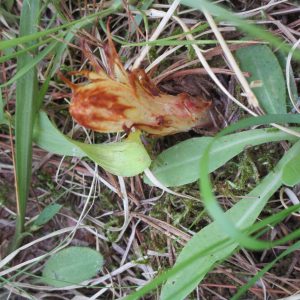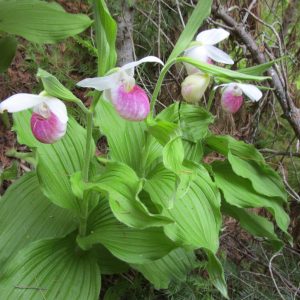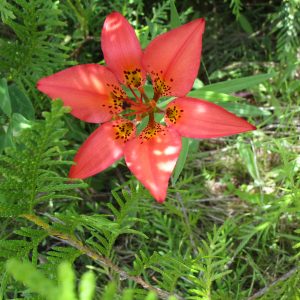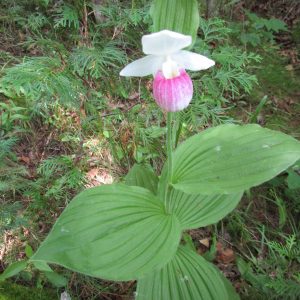This weekend marked my fifth week in Lander, and with each passing week I find myself loving this little corner of the country even more. Last week I was able to meet some AIM crews from around Wyoming that were in town for training; after talking with them about the towns they’re living in, I feel even more grateful and lucky to be in Lander. There’s a wonderful culture with lots of things to do in town and even more things to do just outside the city boundaries. I have always wanted to live in a place where I can get off work and go on a wild adventure before the sun sets, and that has become my reality in Lander. There are so many unique places to explore within an hour of my front door, and even more the farther away I’m willing to go. I’m astounded with how beautiful this country is, and it reinforces my drive and dedication to help conserve the valuable ecosystems found throughout the Lander Field Office. 
Shoshone National Forest, about 20 minutes from my front door.
So far, our days have been filled with exploring our field office scouting for wildflower populations we could potentially collect seeds from, as well as working on a couple rare plant surveys. It’s definitely been a challenge learning the different flora of Wyoming, but every day I retain a little bit more and get a little quicker at keying out unknown plants. While I’ve enjoyed the process of learning a foreign ecosystem, it’s satisfying when all my hard work pays off and I can put my new knowledge to use.

Views from Copper Mountain, a site in our field office.
Yesterday was our first day collecting seeds, and it was quite the adventure. Ranunculus glaberrimus has a little yellow flower that dots many of the rolling hills in our field office, so I assumed it would be no problem finding a large enough population with enough seeds to collect. However, I didn’t take into consideration that the Ranunculus would not be in flower anymore when we collect seeds, which is how I ended up on my hands and knees scouring the rocky slope for a 4 inch tall brown seed head. To make things even more interesting, my coworker and I couldn’t decide if the majority of the seeds were mature enough to collect, even after cutting several open. A few were brown and definitely ripe, but most were still greenish and easily came off the seed head. I’m sure it will get easier to tell if a population has viable seeds to collect as we do it more often, and eventually I’ll chuckle about our first day of collecting seeds. The first few days of field work in any job always blindside you with questions and circumstances you never could have imagined. It just goes with the territory.
I’ve really enjoyed surveying for the rare plants as well. Our first survey was on a hill top with gorgeous bright red soil looking for Trifolium barneybi, a cute little mat-forming clover that’s endemic to the southeastern foothills of the Wind Rivers and southern Beaver Rim area. It’s only found in one county in the world! The other species we survey for is Yermo xanthocephalus, endemic to Fremont county as well and has an even smaller range than T. barneybi. I’m the type of person that enjoys the chase, so searching for these rare species has been the ultimate treasure hunt. We have a rough outline of the populations from previous surveys, so we know where to start looking and the hunt is on from there. Of course, one of the main reasons I like surveys so much is I get to hike around the beautiful rolling Wyoming hills, but it also is rewarding to assist in a project will help determine the land use and permits for these ecosystems in the future. It’s an important aspect of land management, which has been a great experience to be involved in.

Yermo xanthocephalus buds
Well, that’s all I have for now. Cheers to another month!
Danielle
Seeds of Success Intern
Lander BLM




















